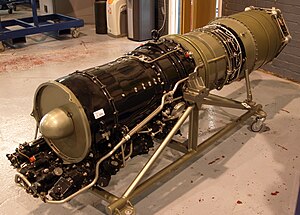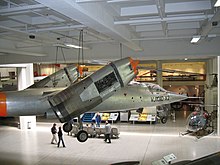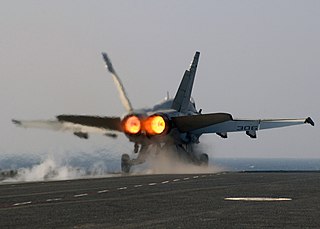
An afterburner is an additional combustion component used on some jet engines, mostly those on military supersonic aircraft. Its purpose is to increase thrust, usually for supersonic flight, takeoff, and combat. The afterburning process injects additional fuel into a combustor in the jet pipe behind the turbine, "reheating" the exhaust gas. Afterburning significantly increases thrust as an alternative to using a bigger engine with its attendant weight penalty, but at the cost of increased fuel consumption which limits its use to short periods. This aircraft application of "reheat" contrasts with the meaning and implementation of "reheat" applicable to gas turbines driving electrical generators and which reduces fuel consumption.

The Eurojet EJ200 is a military low-bypass turbofan used as the powerplant of the Eurofighter Typhoon. The engine is largely based on the Rolls-Royce XG-40 technology demonstrator, which was developed in the 1980s. The EJ200 is built by the EuroJet Turbo GmbH consortium. The EJ200 is also used in the Bloodhound LSR supersonic land speed record attempting car.

The Rolls-Royce Olympus was the world's second two-spool axial-flow turbojet aircraft engine design, first run in May 1950 and preceded only by the Pratt & Whitney J57, first-run in January 1950. It is best known as the powerplant of the Avro Vulcan and later models in the Concorde SST.

The Rolls-Royce Spey is a low-bypass turbofan engine originally designed and manufactured by Rolls-Royce that has been in widespread service for over 40 years. A co-development version of the Spey between Rolls-Royce and Allison in the 1960s is the Allison TF41.

The Rolls-Royce RB.41 Nene is a 1940s British centrifugal compressor turbojet engine. The Nene was a complete redesign, rather than a scaled-up Rolls-Royce Derwent, with a design target of 5,000 lbf (22 kN), making it the most powerful engine of its era. First run in 1944, it was Rolls-Royce's third jet engine to enter production, and first ran less than 6 months from the start of design. It was named after the River Nene in keeping with the company's tradition of naming its jet engines after rivers.

The Rolls-Royce Avon was the first axial flow jet engine designed and produced by Rolls-Royce. Introduced in 1950, the engine went on to become one of their most successful post-World War II engine designs. It was used in a wide variety of aircraft, both military and civilian, as well as versions for stationary and maritime power.

The Rolls-Royce RB.37 Derwent is a 1940s British centrifugal compressor turbojet engine, the second Rolls-Royce jet engine to enter production. It was an improved version of the Rolls-Royce Welland, which itself was a renamed version of Frank Whittle's Power Jets W.2B. Rolls-Royce inherited the Derwent design from Rover when they took over their jet engine development in 1943.

The Armstrong Siddeley Sapphire is a British turbojet engine that was produced by Armstrong Siddeley in the 1950s. It was the ultimate development of work that had started as the Metrovick F.2 in 1940, evolving into an advanced axial flow design with an annular combustion chamber that developed over 11,000 lbf (49 kN). It powered early versions of the Hawker Hunter and Handley Page Victor, and every Gloster Javelin. Production was also started under licence in the United States by Wright Aeronautical as the J65, powering a number of US designs. The Sapphire's primary competitor was the Rolls-Royce Avon.

The de Havilland PS.23 or PS.52 Gyron, originally the Halford H-4, was Frank Halford's last turbojet design while working for de Havilland. Intended to outpower any design then under construction, the Gyron was the most powerful engine of its era, producing 20,000 lbf (89 kN) "dry", and 27,000 lbf (120 kN) with reheat.

The Bristol Siddeley Orpheus is a single-spool turbojet developed by Bristol Siddeley for various light fighter/trainer applications such as the Folland Gnat and the Fiat G.91. Later, the Orpheus formed the core of the first Bristol Pegasus vectored thrust turbofan used in the Harrier family.

The EWR VJ 101 was an experimental German jet fighter vertical takeoff/landing (VTOL) tiltjet aircraft. VJ stood for Versuchsjäger,. The 101 was one of the first V/STOL designs to have the potential for eventual Mach 2 flight.

The Rolls-Royce RB.93 Soar, also given the Ministry of Supply designation RSr., was a small, expendable British axial-flow turbojet intended for cruise missile use and built by Rolls-Royce Limited in the 1950s and 1960s. Like all the company's gas turbine engines it was named after a British river, in this case, the River Soar.

The Orenda PS.13 Iroquois was an advanced turbojet engine designed for military use. It was developed by the Canadian aircraft engine manufacturer Orenda Engines, a part of the Avro Canada group. Intended for the CF-105 Arrow interceptor, development was cancelled, along with the Arrow, in 1959.
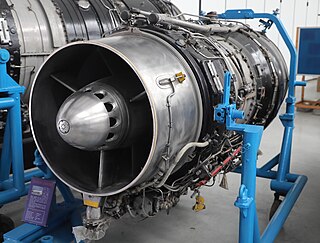
The de Havilland Gyron Junior is a military turbojet engine design of the 1950s developed by the de Havilland Engine Company and later produced by Bristol Siddeley. The Gyron Junior was a scaled-down derivative of the de Havilland Gyron.

The Pratt & Whitney J48 is a turbojet engine developed by Pratt & Whitney as a license-built version of the Rolls-Royce Tay. The Tay/J48 was an enlarged development of the Rolls-Royce Nene.
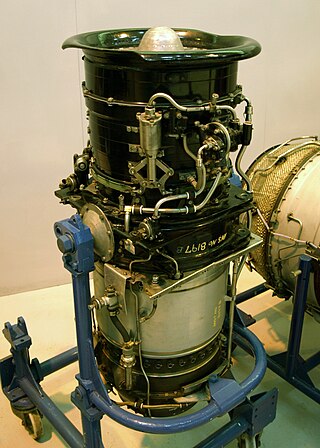
The Rolls-Royce RB.108 was a British jet engine designed in the mid-1950s by Rolls-Royce specifically for use as a VTOL lift engine. It was also used to provide horizontal thrust in the Short SC.1.
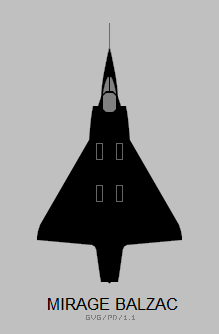
The Dassault Balzac V was a French vertical takeoff and landing (VTOL) testbed of the early 1960s. It was built by Dassault Aviation from a prototype Mirage III aircraft to test the configuration for the Mirage IIIV. The sole example was involved in two major accidents that killed the aircraft's pilot, and was not repaired after the second crash.

The Rolls-Royce RB.141 Medway was a large low-bypass turbofan engine designed, manufactured and tested in prototype form by Rolls-Royce in the early-1960s. The project was cancelled due to changes in market requirements that also led to the development and production of the smaller but similar Rolls-Royce Spey, and the cancellation of the Armstrong Whitworth AW.681 military transport aircraft project.
The Rolls-Royce/MAN Turbo RB.153 was a high-performance 6,850 pounds-force (3,110 kgf) dry thrust turbofan engine developed jointly by Rolls-Royce Limited and MAN Turbo. Developed for the German EWR VJ 101D interceptor with a German-developed thrust-deflector system. The engine was also proposed for a number of other military VTOL projects including the Hawker P.1157 and Dornier Do 31. A commercial-version of the engine was also considered for the Messerschmitt Me P.160 airliner. The VJ101D project was cancelled and the engine never flew, being retained as a test bed.

The Rolls-Royce Olympus turbojet engine was developed extensively throughout its production run, the many variants can be described as belonging to four main groups.
